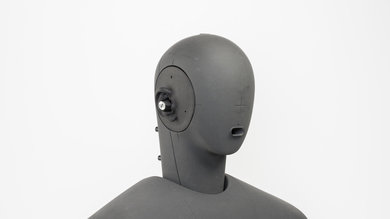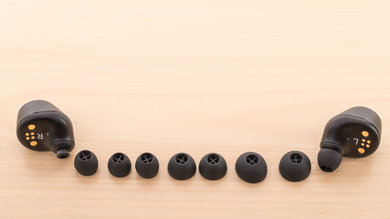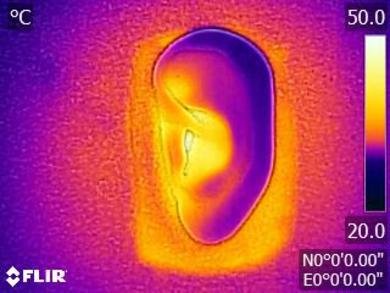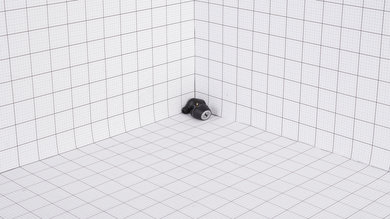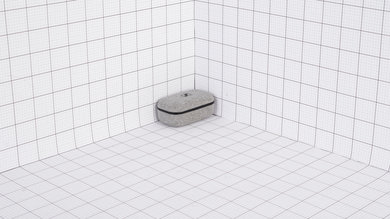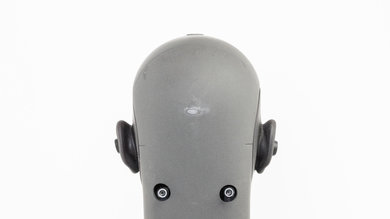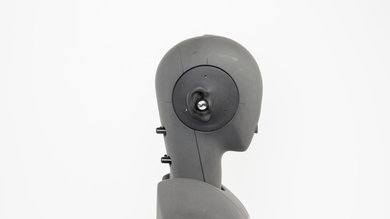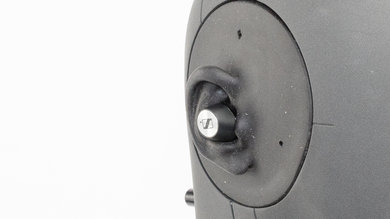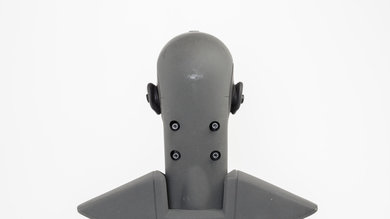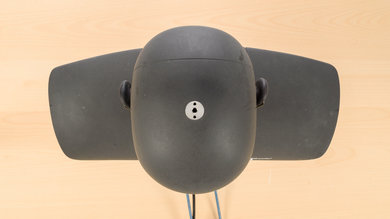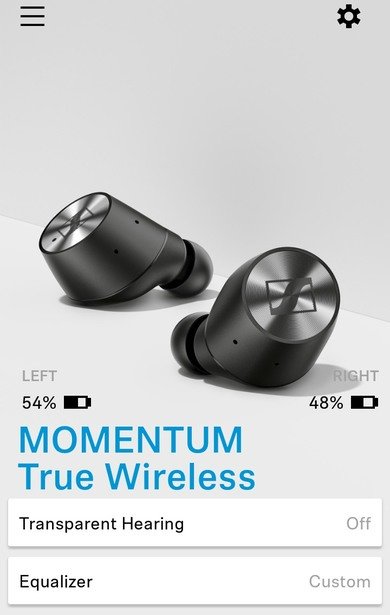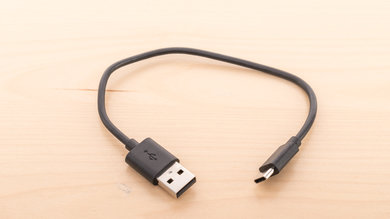The Sennheiser MOMENTUM True Wireless are okay mixed usage closed-back in-ears. These truly wireless headphones have a great wireless range and good isolation performance. However, they have a somewhat unbalanced default sound profile and aren’t the most comfortable in-ears that we’ve tested so far. On the upside, they're very well-made and feel like premium headphones. They also come with a nice charging case that gives you additional battery life and protects the headphones well.
Our Verdict
The Sennheiser MOMENTUM True Wireless are adequate for mixed usage. Their bass-heavy sound profile is better-suited for genres like EDM and hip-hop, though it can be adjusted with a graphic EQ in their companion app. However, their in-ear fit may not suit everyone. Fortunately, they should block out a good amount of noise during your commute or time at the office. They're very portable and stable enough for light physical activities but are on the bulkier side for in-ears. Unfortunately, they're sub-par for watching TV and gaming as their default latency is too high, but they do support lower-latency codecs.
- Well-built and durable design.
- Very good passive noise isolation.
- Support for aptX-LL Bluetooth codec.
- Short battery life.
- In-ear fit might not be for everyone.
- Poor microphone recording quality.
The Sennheiser MOMENTUM True Wireless are passable for neutral listening. They have a thumpy and consistent bass and a well-balanced mid-range, but their treble accuracy is sub-par. The detail and brightness of vocals, leads, and cymbals are somewhat dulled by default, making them better suited for bass-heavy genres than vocal-centric music. However, you can tweak your listening experience via a graphic EQ in their companion app, though not in very thorough detail.
- Graphic EQ in companion app.
- Sub-par treble accuracy.
The Sennheiser MOMENTUM True Wireless are decent for commuting and traveling. These compact in-ears have good noise isolation performance and barely leak, meaning you can raise your music volume without bothering nearby commuters. Also, they're fairly comfortable for short trips like bus rides, but the in-ear fit isn't ideal for long flights. Unfortunately, their short continuous battery life means that you'll have to put them back in their case to charge on longer journeys.
- Well-built and durable design.
- Very good passive noise isolation.
- Short battery life.
- In-ear fit might not be for everyone.
The Sennheiser MOMENTUM True Wireless are great for sports. These truly wireless headphones are portable, breathable, and don’t pop out of your ears during physical activity. They have a bulkier design than most in-ears, so people with smaller ears might not experience as stable a fit.
- Well-built and durable design.
- Stable, breathable fit.
- In-ear fit might not be for everyone.
The Sennheiser MOMENTUM True Wireless are alright for the office. They isolate ambient chatter very well and let you concentrate on your tasks. You can listen to your music at high volumes without bothering colleagues since they barely leak any sound. However, they have short battery life on one charge, so you will need to take breaks to keep them topped up. Also, due to their somewhat bulky design, their in-ear fit may not suit everyone.
- Minimal audio leakage.
- Very good passive noise isolation.
- Short battery life.
- In-ear fit might not be for everyone.
The Sennheiser MOMENTUM True Wireless aren't suitable for wireless gaming due to their high audio latency on PC, despite their support for lower-latency codecs. They're also incompatible with PS4 and Xbox One consoles.
The Sennheiser MOMENTUM True Wireless are Bluetooth-only and can't be used with a wired connection.
The Sennheiser MOMENTUM True Wireless are mediocre for phone calls. Speech sounds thin and muffled, and the integrated mic may struggle to isolate your voice from loud background chatter. On the plus side, they provide good noise isolation performance, so you should be able to hear what people on the other end of the line are saying, even in a crowded environment.
- Very good passive noise isolation.
- Poor microphone recording quality.
Changelog
- Updated Aug 17, 2020: Updated review for accuracy and clarity.
- Updated Feb 07, 2020: Converted to Test Bench 1.4.
- Updated Nov 21, 2019: Converted to Test Bench 1.3.1.
- Updated Nov 21, 2019: Converted to Test Bench 1.3.
Check Price
Popular Headphones Comparisons
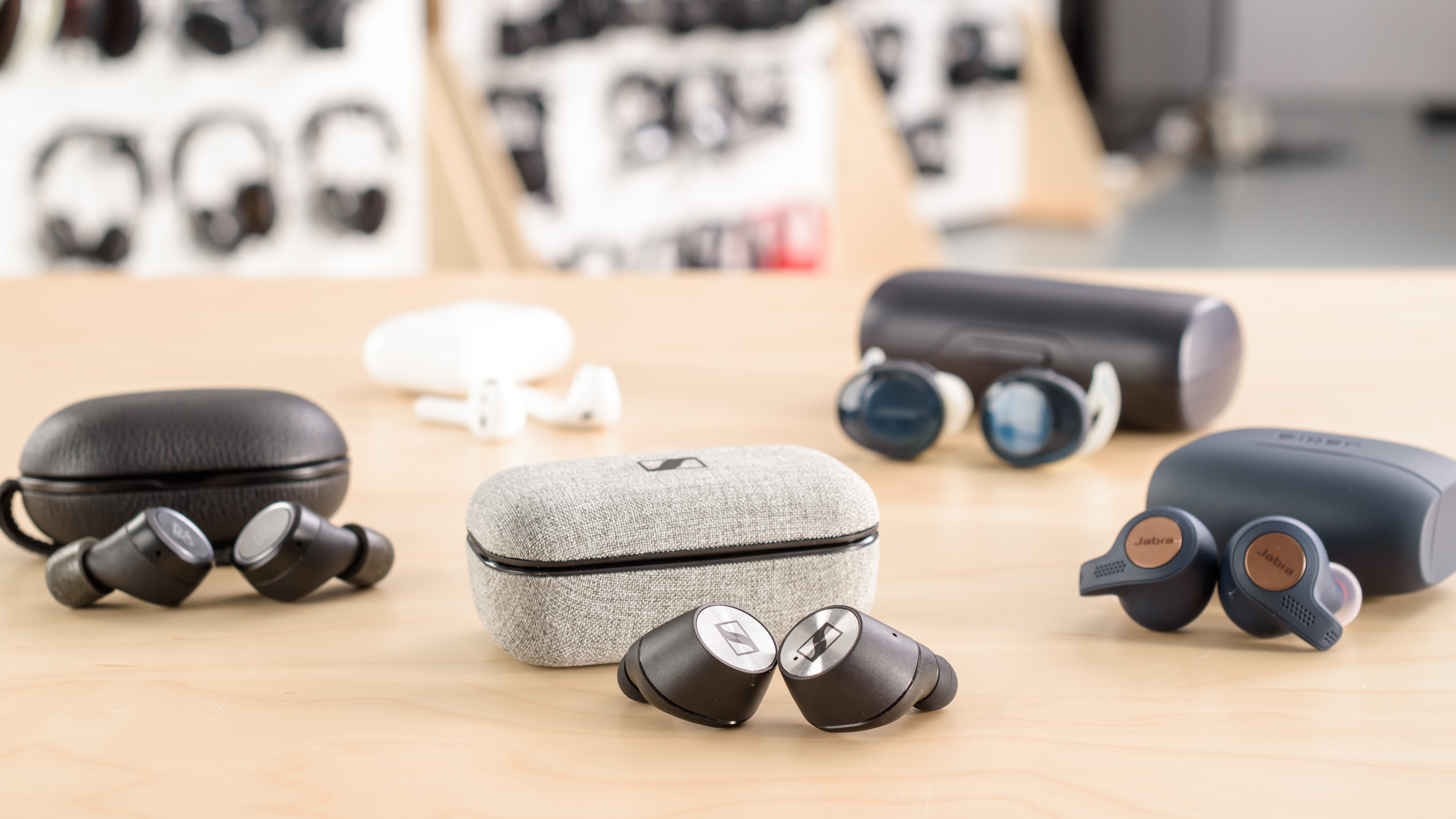
The Sennheiser MOMENTUM True Wireless are decently versatile headphones. They have poor treble performance and short 3.7-hour battery life, which is lower than other premium truly wireless headphones. Nevertheless, they have a complete and responsive control scheme and have good isolation performance, which is useful during commuting and at the office.
For more options, see our recommendations for the best truly wireless earbuds, the best earbuds with a mic, and the best Bluetooth earbuds.
The Sony WF-1000XM3 Truly Wireless are more versatile truly wireless headphones than the Sennheiser MOMENTUM True Wireless. The Sony are a bit more comfortable and come with more tip options, including foam tips. Their sound profile is better balanced, and they last longer on a single charge, while their app offers more customization options. On the other hand, the Sennheiser have volume control, which the Sony are lacking, and their fit passively isolates ambient noise better than the ANC feature of the Sony. They also support the aptX-LL codec, which is nice.
If a neutral sound profile is your biggest criteria, the Bose SoundSport Free Truly Wireless are the better headphones over the Sennheiser MOMENTUM True Wireless. The Bose deliver well-balanced audio reproduction and are versatile for a wider variety of music genres. They will also sound a bit more spacious due to their semi-open design. However, this means they don’t isolate ambient noise as well as the Sennheiser and will leak significantly more audio. The Bose companion app also doesn’t offer any sort of customization options and the buds’ control-scheme is hard to use, while the touch-sensitive area of the Sennheisers is easy to use and responsive.
The Apple AirPods Pro are better truly wireless headphones than the Sennheiser MOMENTUM True Wireless. The Apple are more comfortable and have a great ANC feature that blocks ambient noise. They also have a more neutral out-of-the-box sound profile. The Sennheiser look a bit more high-end and barely leak any noise at high volume. They also have volume control, which the Apple lack.
The Sennheiser MOMENTUM True Wireless are slightly worse than the Bang & Olufsen E8 3.0 True Wireless. The Sennheiser may have better controls but the Bang & Olufsen have almost triple the battery life of the Sennheiser and they have a better microphone performance. However, the Sennheiser have a graphic EQ, which is better for customization compared to the Bang & Olufsen's TouchTone EQ.
Test Results

The Sennheiser MOMENTUM True Wireless are nice-looking truly wireless headphones but are quite bulky, with thick and large housings that protrude from your ears. They have a premium look thanks to the dense plastic and metal touch-sensitive surface on the back of the buds. They only come in black with a metallic circle accent.
The Sennheiser MOMENTUM True Wireless headphones are just adequately comfortable. Their bulky design may put some pressure on your ear canal and cause some fatigue, especially if you have small ears. However, they're very lightweight and come with four different ear tips to help you achieve a slightly more secure fit. For a smaller bud design that may fit most people better, consider the RHA TrueConnect Truly Wireless.
The Sennheiser MOMENTUM True Wireless have a decent touch-sensitive control scheme, though it may take some time to get used to. The left earbud is the command center for everything related to music. One tap plays and pauses, two taps skips forward, and three taps skips backward. The right earbud is for call management. One tap answers and ends calls while two taps rejects them. When no calls are coming in, one tap triggers your device voice assistant, while two taps control talk-through. Holding down the left earbud also lowers the volume while holding the right one raises it.
These headphones also have a smart pause feature, meaning as soon as you take out an earbud, the music will stop. However, if you pause your music manually with the left earbud, then take it out, music will start playing again, which seems to be an oversight or a bug. On the upside, you also have voice prompts for min/max volume and while pairing the headphones.
The provided charging case for the Sennheiser MOMENTUM True Wireless is great. It's a solid case that protects the headphones from scratches, water exposure, and impacts, and is better than other true wireless earbuds like the Jabra Elite Active 65t Truly Wireless. However, there's no locking mechanism, and the case can open if it falls on the ground, exposing the headphones. That said, the magnets inside should help keep the earbuds in place if it falls open.
The Sennheiser MOMENTUM True Wireless are very well-built headphones, similar to the Bang & Olufsen Beoplay E8 2.0 Truly Wireless 2019. They look and feel like premium headphones, and are made of a dense plastic with a nice metal surface that acts as touch-sensitive controls. They should survive a few accidental drops without too much damage. The case is also very well-made and feels sturdy. The earbuds are also rated IPX4 for sweat and water resistance, but we don't currently test this.
The headphones are stable enough for running and other light physical activities. They don’t have stability fins like more sports-oriented headphones, but the in-ear fit is secure enough, so they shouldn’t spontaneously pop out of your ears. They also don’t have a cable, eliminating the risk of getting hooked on something, or getting stuck on clothing. People with smaller ears may experience a less stable fit due to their bulky design.
These in-ears have a somewhat bass-heavy default sound profile. They have a thumpy, extended bass that creates a slight bit of boominess but not to the point where it completely overwhelms vocals and lead instruments. Unfortunately, their uneven treble response robs some tracks of detail and clarity.
The Sennheiser MOMENTUM True Wireless' frequency response consistency is superb. If you achieve a proper, air-tight fit, then they should be able to provide consistent bass and treble responses every time you use them.
The headphones have very good bass accuracy. It's deep and punchy and should provide adequate thump and rumble for EDM and hip hop fans. However, high-bass is overemphasized, resulting in a bit of boominess and muddiness in some tracks.
The Sennheiser MOMENTUM True Wireless have an amazingly accurate mid-range. The response is quite even and mostly flat. The low-mid overemphasis, which is a continuation of the high-bass bump, adds a bit of muddiness to vocals and lead instruments, slightly cluttering the mix.
The treble accuracy of these headphones is sub-par. The overall response is rather uneven and quite underemphasized, especially in low-treble. The broad dip will negatively affect the detail and brightness of vocals and lead instruments. For truly wireless headphones that have a more accurate treble range, consider the Sony WF-1000XM3 Truly Wireless.
The Sennheiser MOMENTUM True Wireless have satisfactory peaks and dips performance. A bump in the high-bass range generates a bit of boominess while the adjacent dip in the mid-mid range nudges vocals and lead instruments toward the back of the mix. A bump in the high mid is responsible for a slight bit of boxiness while the steep drop in the low treble dulls the clarity of some vocals and lead instrumentals.
The stereo imaging of these headphones is excellent. Their weighted group delay is well below the audibility threshold, which ensures a tight bass and transparent treble reproduction. Also, the L/R drivers of our test unit are well-matched in frequency, amplitude, and phase response. This is important for the accurate placement and localization of objects (voices, instruments, video game effects) in the stereo image. Note that these results are only valid for our unit, and yours may perform differently.
These in-ears have a terrible passive soundstage. In-ears fully bypass interaction with the outer ear, which is essential in creating a speaker-like listening experience. Also, because these headphones have a closed-back enclosure, their soundstage won't be perceived to be as open as that of open-back earbuds like the Apple AirPods (2nd generation) Truly Wireless or the Bose SoundSport Free Truly Wireless.
These headphones don't have any virtual soundstage features.
The weighted harmonic distortion performance of these headphones is very good. Aside from a spike in the low-treble range, the rest of the frequency range stays within good limits, ensuring mostly clean and pure audio reproduction.
These are the settings used to test the Sennheiser MOMENTUM True Wireless. Our results are only valid when the headphones are used in this configuration.
Unlike the Sennheiser MOMENTUM True Wireless 2, these headphones don't have an active noise cancellation feature. However, they still do a good job of passively reducing noise. They're incredibly effective when it comes to reducing the volume of ambient chatter and high-pitched background noise, like the hum of an AC unit. That said, they struggle significantly when dealing with lower-frequency background noise, like the rumble of airplane and bus engines.
The Sennheiser MOMENTUM True Wireless' leakage performance is remarkable. They leak virtually no audio, so there's no need to worry about disturbing those nearby, even if you listen to your music at very loud volumes in a quiet room.
The Sennheiser MOMENTUM True Wireless have an integrated mic.
The recording quality of the integrated microphone is poor. Speech sounds thin, muffled, and lacking in detail, not to mention occasionally piercing and harsh.
The Sennheiser MOMENTUM True Wireless' microphone is mediocre at isolating speech from background noise. In even moderately loud environments, people on the other end of the line will have difficulty understanding you.
Update: 02/13/2019: The Sennheiser MOMENTUM True Wireless have a passive battery drain issue that has been corroborated by a lot of users in the discussion threads. Since we don't yet have a fully developed test for passive battery drain/battery leak, we haven't made any changes to the review's battery score. Once we have an accurate way to measure this effect, the review will be updated.
The Sennheiser MOMENTUM True Wireless have poor battery performance. They only offer 3.7 hours of continuous battery life, though their case offers two additional charges. That should get you through the work day if you take breaks to charge the buds. Unfortunately, they don’t have any power-saving features to extend their battery life. On the upside, you can see the amount of battery left in each earbud inside the app. For truly wireless headphones with better battery life, take a look at the Cambridge Audio Melomania 1 Truly Wireless or the Klipsch T5 True Wireless.
The Sennheiser MOMENTUM True Wireless headphones are compatible with Sennheiser's Smart Control app. When connected to your phone, you have access to a small range of customization options such as a basic graphic EQ, which is quite limited and doesn't provide nearly as much customizability as a parametric EQ. You can also activate talk-through directly from the app and enable smart pause, which pauses the music when you take out one of the earbuds. However, manually pausing your music with the left earbud, and then taking it out, will result in music unpausing in the right earbud, which seems to be some sort of oversight or bug.
These headphones have alright Bluetooth connectivity. They can only connect to one device at a time and don't support NFC pairing, which is disappointing. On the upside, they support Bluetooth version 5.0. Their SBC and aptX latency may be too high for watching videos or gaming on PC. However, they're compatible with the aptX-LL codec, which drops their latency to the point where you should be able to watch videos without too much of a problem. Unfortunately, their audio lag on iOS is very high, making streaming video on Apple mobile devices almost impossible. However, some apps and devices compensate for latency differently, so your real-world experience may vary.
These truly wireless headphones are Bluetooth-only.
The Sennheiser MOMENTUM True Wireless can connect to Bluetooth-enabled PCs, but not PS4 consoles.
The Sennheiser MOMENTUM True Wireless aren't compatible with Xbox One consoles.
The Sennheiser MOMENTUM True Wireless come with a charging case that gives you two additional charges, which results in an estimated seven to eight extra hours of listening time.

